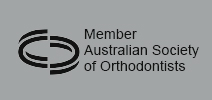At the orthodontic Congress in Sydney a few years ago, I learned how the use of orthodontic appliances creates permanent tooth movement through a process of bone remodeling.
The whole principle of moving teeth relies on the constant pressure of the tooth surface against the membrane that surrounds your tooth, not a lot of force is needed, just enough to feel some pressure. Not to get too technical I am going to attempt a most basic explanation.
There are two types of cells responsible for bone remodeling. Osteoblasts and osteoclasts…the ‘clasts’ break down, and the ‘blasts’ build up. When the positioning devices pull the tooth, it puts pressure against the wall of the periodontal ligament (the PDL encases the part of the tooth in the bone and holds it in place) and in turn the bone.
After 2 or 3 days of this pressure, the osteoclasts start to break down bone to make space for the tooth to move. Conversely, the gap created on the other side needs to have new cells fill up the space and stabilize the new position–that is the job of the osteoblasts. This, however, takes many months to complete which is why it is important to wear your retainers after your braces are removed!
Part of the issue with elastics is that they rely on patient compliance, that is to say that we need to remember to keep changing them ourselves, whereas the wires are permanently there in place doing their job whether we like it or not.
While the pressure is being applied, this process is occurring. It can be a little uncomfortable, and the temptation is to not use the elastics…however this will set your treatment back and prolong the discomfort. Remember when you first got your braces and they were uncomfortable for the first few days? Well, if you had removed them after the first day you would have had to go through that all again when you put them back on…make sense?
So, perseverance is the key. Work through the movement issues and you will find that over time you simply forget they are there, and they will just continuously do their job.
It is also really important to remember to change them at least 3 or 4 times a day as over time the elastics lose their elasticity and become less efficient, again, prolonging the treatment time…and let’s face it…nobody wants to do that!
So remember to change your elastics regularly and you will soon be elastic (and braces!) free!


